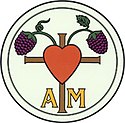Dunkard Brethren Church
| Dunkard Brethren Church | |
|---|---|
| Classification | Brethren World Assembly |
| Origin | 1926 |
| Separations | Conservative German Baptist Brethren Church[1] |
| Congregations | 26 |
| Members | 1,035 |
| Official website | dunkardbrethrenchurch.com |
| Part of a series on the |
| Schwarzenau Brethren (the German Baptists or Dunkers) |
|---|
 |
| Background |
| Doctrinal tenets |
|
| People |
| Groups |
Defunct groups |
| Related movements |
| Part of a series on |
| Anabaptism |
|---|
 |
|
|
The Dunkard Brethren Church is a
The Dunkard Brethren Church observes the
In 2001, the Dunkard Brethren Church had approximately 1035 members in 26 congregations.
Name
The name Dunkard or Dunker is derived from the
History
The Dunkard Brethren are a branch of the
The
Early in the 20th century, some members of Church of the Brethren in the United States, the largest of the branch of the Schwarzenau Brethren, began to believe that there was a drift away from the old apostolic standards, such as the wearing of
During the Annual Conference in 1926, concerns nearly identical to those of Kesler and his sympathizers were addressed by other members, but not resolved in a way that satisfied Kesler and his followers. Subsequently the Kesler group withdrew from the Church of the Brethren and in 1926 formed the Dunkard Brethren Church.[7]
Immigration to the U.S.
In 1719, led by Peter Becker, twenty families left Germany and immigrated to Germantown, Pennsylvania, where they settled in what was then a separate community outside Philadelphia. Alexander Mack led 200 other Brethren to the Netherlands in 1720; after living there for nine years, they found that religious conditions had deteriorated. They immigrated to Pennsylvania, joining the original Dunkard group.[8]
Belief and practice
Dunkard Brethren practice
The Dunkard Brethren practice the
Members and congregations
In 1980 there were 1,035 members in 26 congregations.[9] The Dunkard Brethren Church has 25 congregations in the United States, with approximately 900 members. The majority of the churches are located in Pennsylvania, Maryland, Indiana, Iowa, Kansas, California, and Ohio. They support a mission among the Navajo Indians in New Mexico, and a mission in Africa.
Publication
The church's publication, a paper that has been published monthly since October 1922, is called The Bible Monitor.[1]
See also
- Conservative Mennonites
- Beachy Amish
- Henry Studebaker, founder of the automobile company
References
- ^ ISBN 978-1-57910-456-6.
- ^ ISBN 978-1-61592-738-8.
- ^ Dunkard Brethren Church Polity. Dunkard Brethren Church. 1 November 2021. p. 6.
- ISBN 978-1-317-47194-3.
- ISBN 978-0-318-00487-7.
- ISBN 978-1-4616-5884-9.
- ^ Donald F. Durnbaugh (ed.) The Brethren Encyclopedia, Volume I, Philadelphia, 1983, pp. 408/9.
- ^ History Archived 2017-04-20 at the Wayback Machine, Dunkard Brethren Church
- ^ a b Donald F. Durnbaugh (ed.) The Brethren Encyclopedia, Volume I, Philadelphia, 1983, page 409.
Further reading
- Keith M. Bailey: They Counted the Cost: The History of the Dunkard Brethren Church from 1926 to 2008, Nappanee, 2009.
- Donald F. Durnbaugh: Fruit of the Vine, A History of the Brethren 1708–1995, Elgin, Illinois, 1997.
- Donald F. Durnbaugh (editor): The Brethren Encyclopedia, Philadelphia, 1983.
- Cornelius J. Dyck, Dennis Martin, et al. (editors): The Mennonite Encyclopedia, Hillsboro, Canada, 1955-1959.
